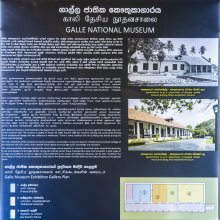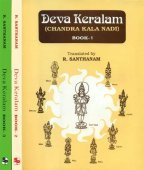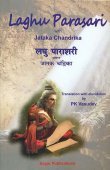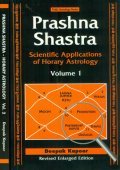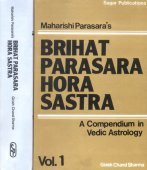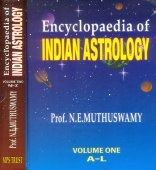Mar, Mār: 6 definitions
Introduction:
Mar means something in Hinduism, Sanskrit, the history of ancient India, biology, Tamil. If you want to know the exact meaning, history, etymology or English translation of this term then check out the descriptions on this page. Add your comment or reference to a book if you want to contribute to this summary article.
Images (photo gallery)
India history and geography
Source: Cologne Digital Sanskrit Dictionaries: Indian Epigraphical GlossaryMār.—(IA 15), a land measure. Note: mār is defined in the “Indian epigraphical glossary” as it can be found on ancient inscriptions commonly written in Sanskrit, Prakrit or Dravidian languages.
Source: Shodhganga: Vernacular architecture of Assam with special reference to Brahmaputra ValleyMar is a Dimasa Kachari term referring to “a house to accommodate guest”.—It appears in the study dealing with the vernacular architecture (local building construction) of Assam whose rich tradition is backed by the numerous communities and traditional cultures.

The history of India traces the identification of countries, villages, towns and other regions of India, as well as mythology, zoology, royal dynasties, rulers, tribes, local festivities and traditions and regional languages. Ancient India enjoyed religious freedom and encourages the path of Dharma, a concept common to Buddhism, Hinduism, and Jainism.
Biology (plants and animals)
Source: Google Books: CRC World Dictionary (Regional names)1) Mar in India is the name of a plant defined with Cocos nucifera in various botanical sources. This page contains potential references in Ayurveda, modern medicine, and other folk traditions or local practices It has the synonym Calappa nucifera Kuntze (among others).
2) Mar in Nigeria is also identified with Pennisetum glaucum It has the synonym Holcus spicatus L. (etc.).
Example references for further research on medicinal uses or toxicity (see latin names for full list):
· Bulletin of the Torrey Botanical Club (1895)
· Diss. de Sagu (1757)
· J. Cytol. Genet. (1990)
· Journal of Ethnobiology and Ethnomedicine. (2005)
· Die Pflanzenwelt Ost-Afrikas (1895)
· Journal of Ethnopharmacology (2005)
If you are looking for specific details regarding Mar, for example pregnancy safety, health benefits, side effects, chemical composition, diet and recipes, extract dosage, have a look at these references.

This sections includes definitions from the five kingdoms of living things: Animals, Plants, Fungi, Protists and Monera. It will include both the official binomial nomenclature (scientific names usually in Latin) as well as regional spellings and variants.
Languages of India and abroad
Sanskrit dictionary
[Sanskrit to German]
Sanskrit, also spelled संस्कृतम् (saṃskṛtam), is an ancient language of India commonly seen as the grandmother of the Indo-European language family (even English!). Closely allied with Prakrit and Pali, Sanskrit is more exhaustive in both grammar and terms and has the most extensive collection of literature in the world, greatly surpassing its sister-languages Greek and Latin.
Tamil dictionary
Source: DDSA: University of Madras: Tamil LexiconMār (மார்) noun < மார்பு. [marpu.] [K. mār.]
1. See மார்பு [marpu], 1,
2. இப்பாதகன் மாரினெய்வனென்று [ippathagan marineyvanenru] (கம்பராமாயணம் இராவணன்வதை. [kambaramayanam iravananvathai.] 192).
2. Measure of the distance between the tips of the middle fingers when the arms are outstretched = 1 fathom = 4 cubits = 2 yards; நான்குமுழளவான நீட்ட லளவை. [nankumuzhalavana nitta lalavai.]
--- OR ---
Mār (மார்) particle
1. An expletive; ஓர் அசை. [or asai.] (தொல். எழுத். [thol. ezhuth.] 186.)
2. A plural ending of verbs in the third person; பல்லோர் படர்க்கைவிகுதியுள் ஒன்று. [pallor padarkkaiviguthiyul onru.] (தொல். சொல். [thol. sol.] 209.)
3. Honorific termination in the optative mood; ஒரு வியங்கோள் விகுதி. (நன்.) [oru viyangol viguthi. (nan.)]
4. A plural ending of nouns; ஒரு பன்மை விகுதி. தாய்மார் மோர் விற்கப்போவர் [oru panmai viguthi. thaymar mor virkappovar] (நாலாயிர திவ்யப்பிரபந்தம் பெரிய.ாழ். [nalayira thivyappirapandam periyazh.] 3, 1, 9).
Tamil is an ancient language of India from the Dravidian family spoken by roughly 250 million people mainly in southern India and Sri Lanka.
See also (Relevant definitions)
Starts with (+3076): Boar marrow, Crocodile marrow, Human marrow, Maar, Maarish, Maarmik, Madgura, Mahahammattu, Mahardhika, Mar chag, Mar me, Mar pacifico, Mar-chang, Mar-chobah, Mar-payilitam, Mara, Mara hatthi, Mara macho, Mara manjal, Mara oudala.
Ends with (+166): Aab-e-amar, Adhirajakumaar, Akimar, Alamar, Alimar, Amar, Ammar, Annamar, Apamar, Apasmar, Aslularmar, Atavimar, Atikanmar, Avakofemar, Bakilmar, Bansimar, Bemar, Bhakumar, Bharmar, Bhramar.
Full-text (+2028): Lohitanga, Angaraka, Kuja, Bhauma, Navadidhiti, Mangala, Gaganolmuka, Kshitija, Rinantaka, Papagraha, Avaneya, Angara, Bhusuta, Medinija, Mangalavara, Rudhiranana, Kauja, Mahiputra, Dharatmaja, Lohitaka.
Relevant text
Search found 119 books and stories containing Mar, Mār, Maar; (plurals include: Mars, Mārs, Maars). You can also click to the full overview containing English textual excerpts. Below are direct links for the most relevant articles:
Rudra-Shiva concept (Study) (by Maumita Bhattacharjee)
6. Common epithets of Rudra and Śiva < [Chapter 6b - Epithets (References)]
1. Epithets and Attributes of Rudra-Śiva (Introduction) < [Chapter 6a - The Epithets of Rudra-Śiva]
Significance of the Moon in Ancient Civilizations (by Radhakrishnan. P)
4. Hora Formation of Week Days < [Chapter 5 - Adoration of the Sun and Moon]
15. Sign-wise Trimshamshaka Chart of Moon < [Chapter 5 - Adoration of the Sun and Moon]
9. Horoscope of Smt. Kamala (Vrana-yoga) < [Chapter 14 - Case Studies of Natal Chart]
Vaahana Veera < [April – June, 2005]
Rejuvenating Zest of Life < [July – September, 1986]
Immigration from Earth < [April – June, 2006]
Brihat Samhita (by N. Chidambaram Iyer)
Chapter 6 - On the course of Mars (bhauma-cāra)
Chapter 103 - Effects of planetary combination on marriage (vivāha-paṭala)
The Agni Purana (by N. Gangadharan)
Chapter 127 - The auspicious and inauspicious periods of the day
Chapter 131 - Diagrams known as Ghātakacakra, Naracakra and Jayacakra
The Skanda Purana (by G. V. Tagare)
Chapter 115 - The Greatness of Aṅgāraka Tīrtha < [Section 3 - Revā-khaṇḍa]
Chapter 45 - Aṅgāreśvara (Aṅgāra-īśvara) < [Section 1 - Prabhāsa-kṣetra-māhātmya]
Chapter 37 - The Importance of Aṅgārikī Caturthī < [Section 1 - Avantīkṣetra-māhātmya]
Related products
